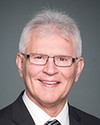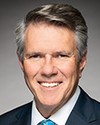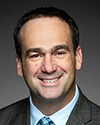Thank you very much, Madam Chair and members.
I'd like to thank the thousands of people who have worked on this park for many, many years, people in the whole GTA and across Canada who have experienced the Rouge Park and love it. I'd like to thank a few people who are with me today: Kevin O'Connor, our president, and Gloria Reszler, who have both worked on this as volunteers for more than 30 years.
I'd like to thank the last government for this bold initiative: Peter Kent, who is here and was the Minister of the Environment, and the Honourable Pauline Browes, who has also worked on this for 30 years. I'd like to thank all the eastern GTA Liberals who worked so hard on this, but particularly John McKay, who met with us so many times and helped to get ecological integrity there. Finally, I'd like to thank Ontario Nature and Environmental Defence for putting forward submissions today that are basically identical to what Friends of the Rouge is putting forward today.
I'm sure I've missed people. I've missed Lois James, who is a mentor and has been working on this for 50 years. I spoke to her today on the way up on the train, and I know she's here in spirit. She's 94 years old.
What we're really asking for is one key amendment, and it's an amendment to make sure that the last 26 years of public planning and approvals involving all the stakeholders, the first nations, all levels of governments, and several municipalities, doesn't somehow get lost in the shuffle to a national park. This amendment started off with the meet-or-exceed criteria in the Canada-Ontario agreement for the land transfer. It was brought forward by Minister Duguid, in his September 2 letter. It was agreed to by 15 eastern GTA candidates who are now Liberals, and it was in the party-approved position of the Liberal Party.
This one amendment could go in clause 9 or in clause 6. We've been told there might be an admissibility issue. If it goes in clause 6, it would just read, “For greater certainty, subsection (1) is intended to support and complement the implementation of pre-existing Ontario Greenbelt, Oak Ridges Moraine, Rouge Park and Watershed Conservation Plans.”
These plans were done by all three stripes of government, and there were over 20 years of rigorous, public, science-based, conservation planning. In a time when there is so little money to go around for this kind of work and when we have to get on with fighting climate change and protecting biodiversity, we can't afford the slippage.
As I said, it was a Liberal Party-approved election commitment that the amendment would be made. It's in the meet-or-exceed policy, and it was also part of the original Canada-Ontario agreement.
I want to give you a quick context. We're in one of the largest extinctions the world has ever experienced, and in southern Ontario, 78% of the land is in agriculture and settlements. Only one-quarter of a per cent is in national parks, and about one-half of a per cent is in provincial parks. Under the 2010 International Biodiversity Convention that we signed, our target was 17%. We know that's over all of Canada, but the Rouge is in the Carolinian zone, which is Canada's most endangered zone. Almost one-third of our endangered species are there and almost one-third of our population. We have 0.25% national parks. We are very fortunate. This is the largest piece of land left.
This is a beautiful shot of the Finch Meander trail, which is one of the special places in the Rouge. This image is of the Rouge beach.
You have to follow the existing plans or you will be going astray from the Great Lakes Water Quality Agreement and the things that are being done to protect the water that several million Canadians drink. Under the Great Lakes Water Quality Agreement, we have to do more.
Under biodiversity, the Rouge is the most biodiverse place in Canada that I know of. It's pretty incredible and the fact that it's next to one of our largest cities also makes that biodiversity even more....
This is what the Liberals committed to. Number one, they said that their priority was making restoration and maintenance of ecological integrity the top park priority. This bill does that, and we commend the Liberals for following through with that commitment.
Secondly, they said they would amend the act to support and complement the implementation of existing land use and conservation plans. That's what we're asking today.
Ecological integrity, is it justified? Of course it is. This is one of the most biodiverse areas in all of Canada. Yes, there will be challenges. Yes, this is an aspirational goal, but we can do it. Let's head for an A-plus park, and if we achieve A-minus, we will have left something that future generations will thank us for. The diversity is so great here and the potential is so high that we should choose no other goal than what has been put forward before you.
On infrastructure, I've heard a lot of misinformation on this. The infrastructure issue has been largely dealt with. First, most of the infrastructure, the highways, the roads, and the railways, have actually been excluded from the park. They're being zoned out with generous provisions for widening. In a lot of existing national parks, you have major highways, you have golf courses, you have a lot of different infrastructure, and they're within the boundaries. In the Rouge they're excluded.
Second, the minister has a specific clause in which the minister can reallocate up to 500 acres of land within the park for unanticipated future infrastructure.
I'll finish off by saying that agriculture can exist in the park, and we support it. It will be finding the right balance between public access to the land and private leases. We ask that you amend clause 6 or clause 9 to support and complement the implementation of existing conservation plans, the greenbelt plan, the Oak Ridges Moraine, and the Rouge watershed. If you don't do this, the tens of thousands of people who worked so hard on it will really feel that their efforts have somehow been diminished. We feel that if you don't do this, we'll be reinventing the wheel and spinning our wheels.
Thank you very much.









